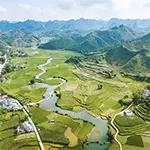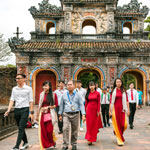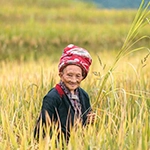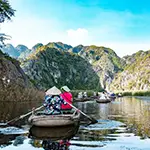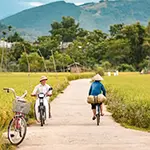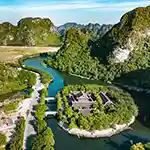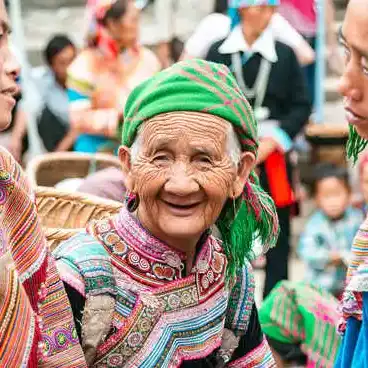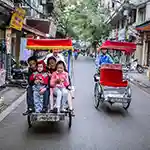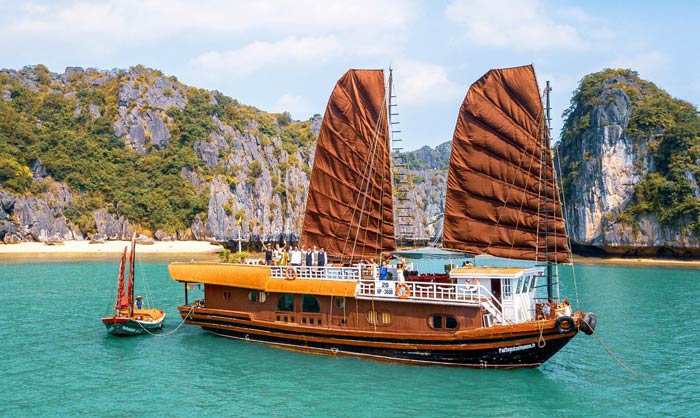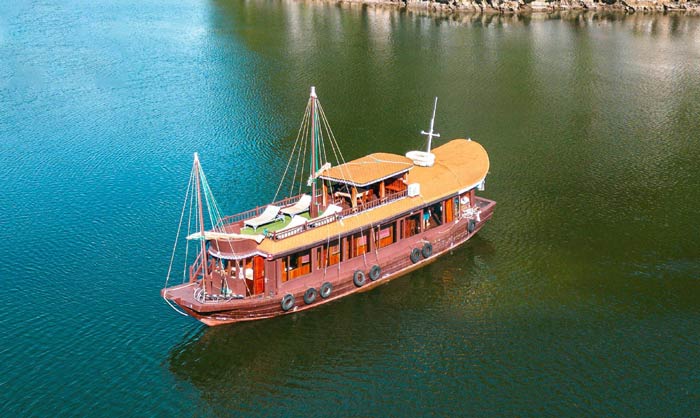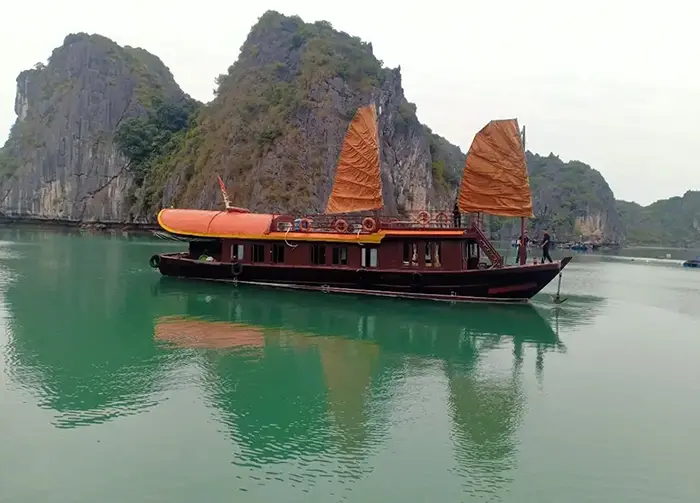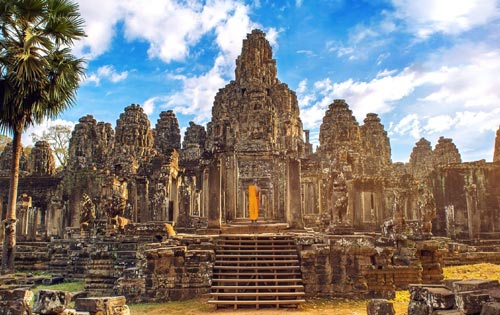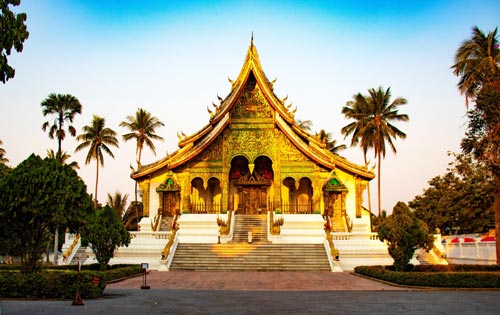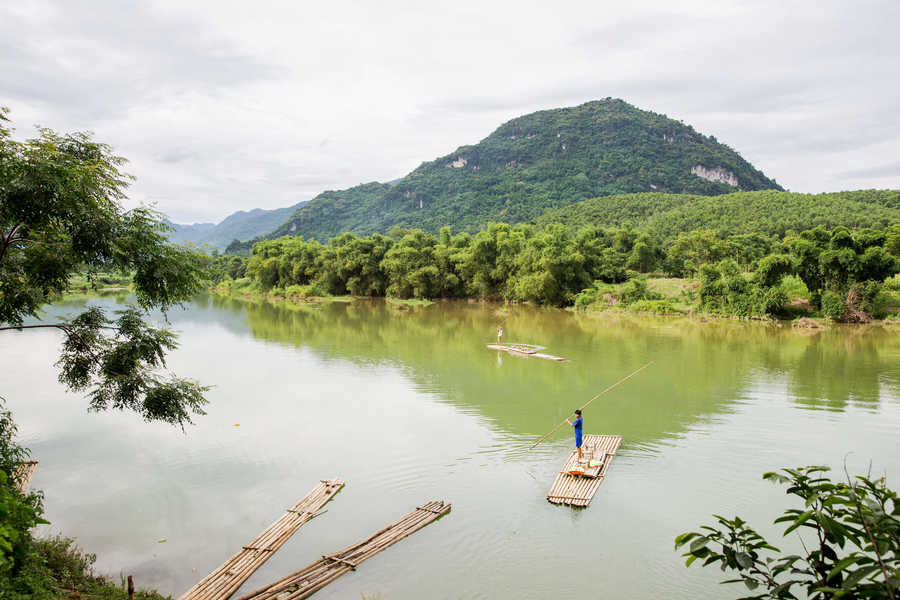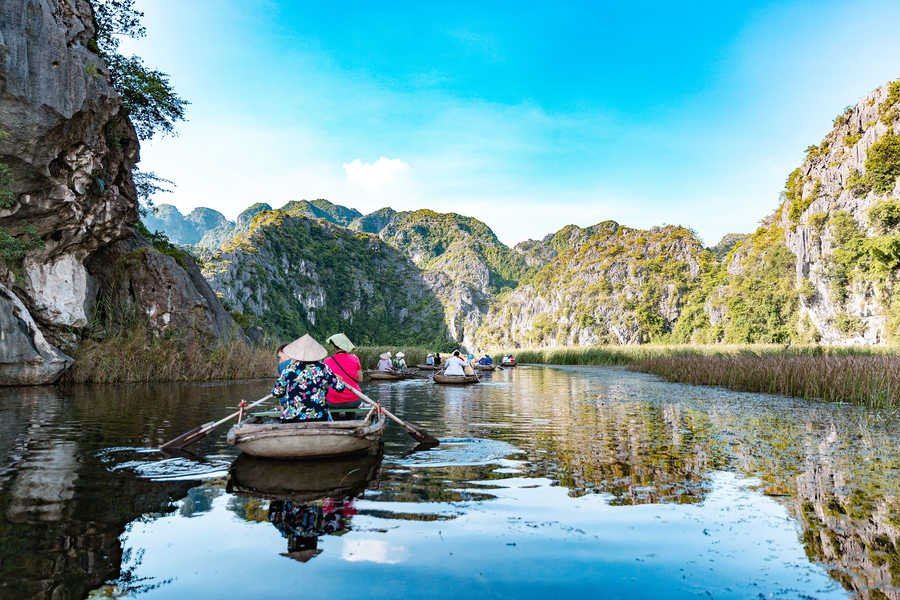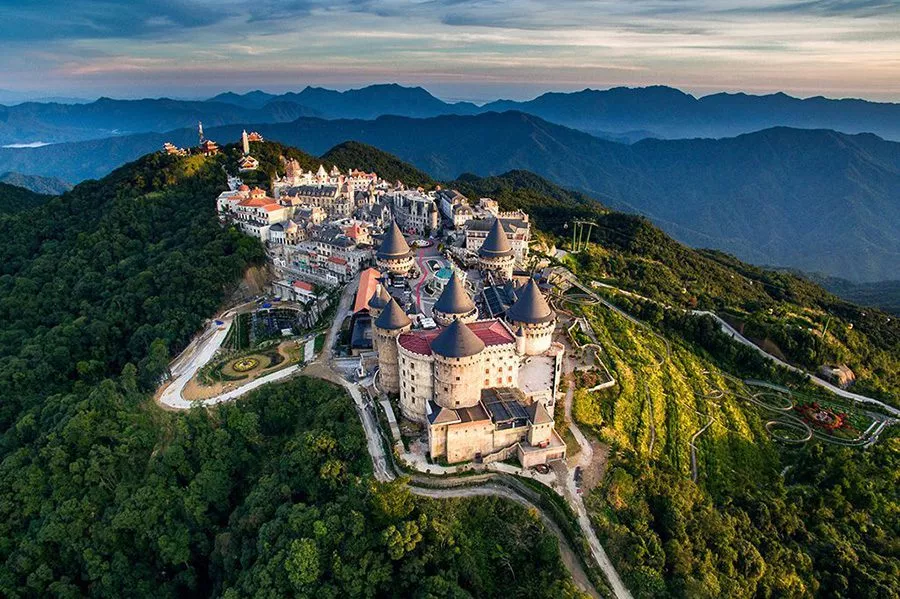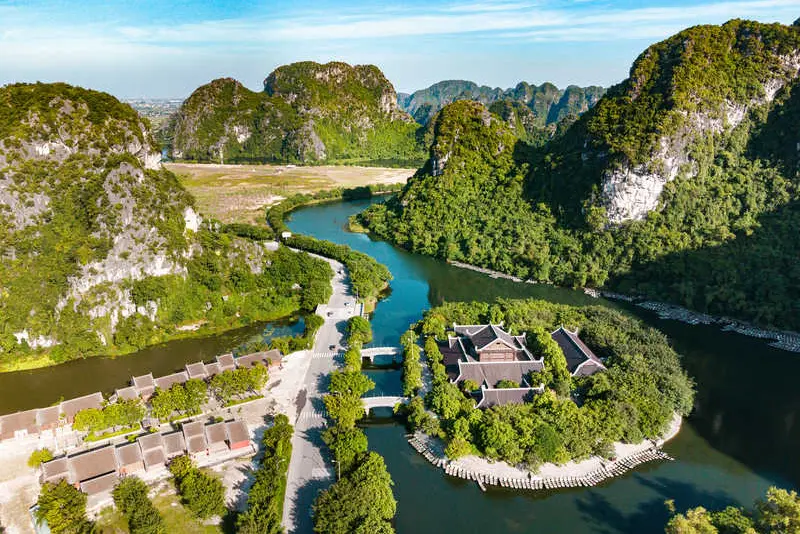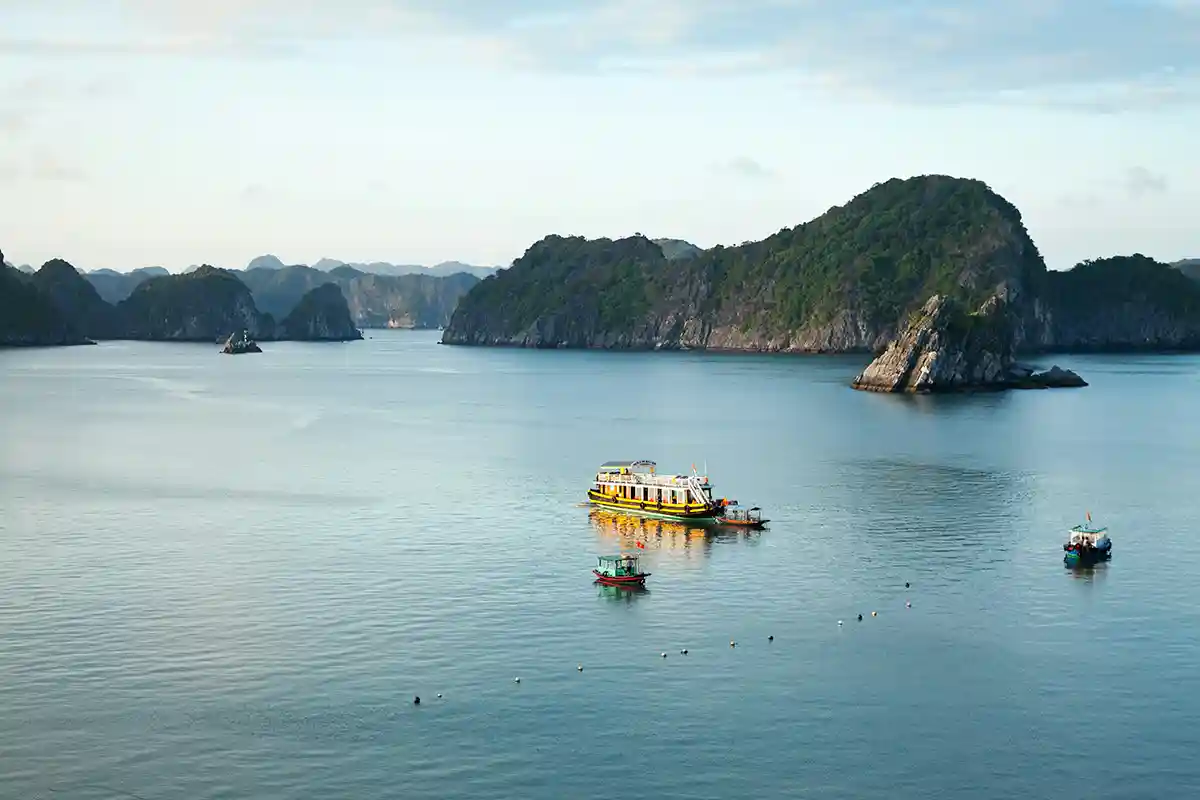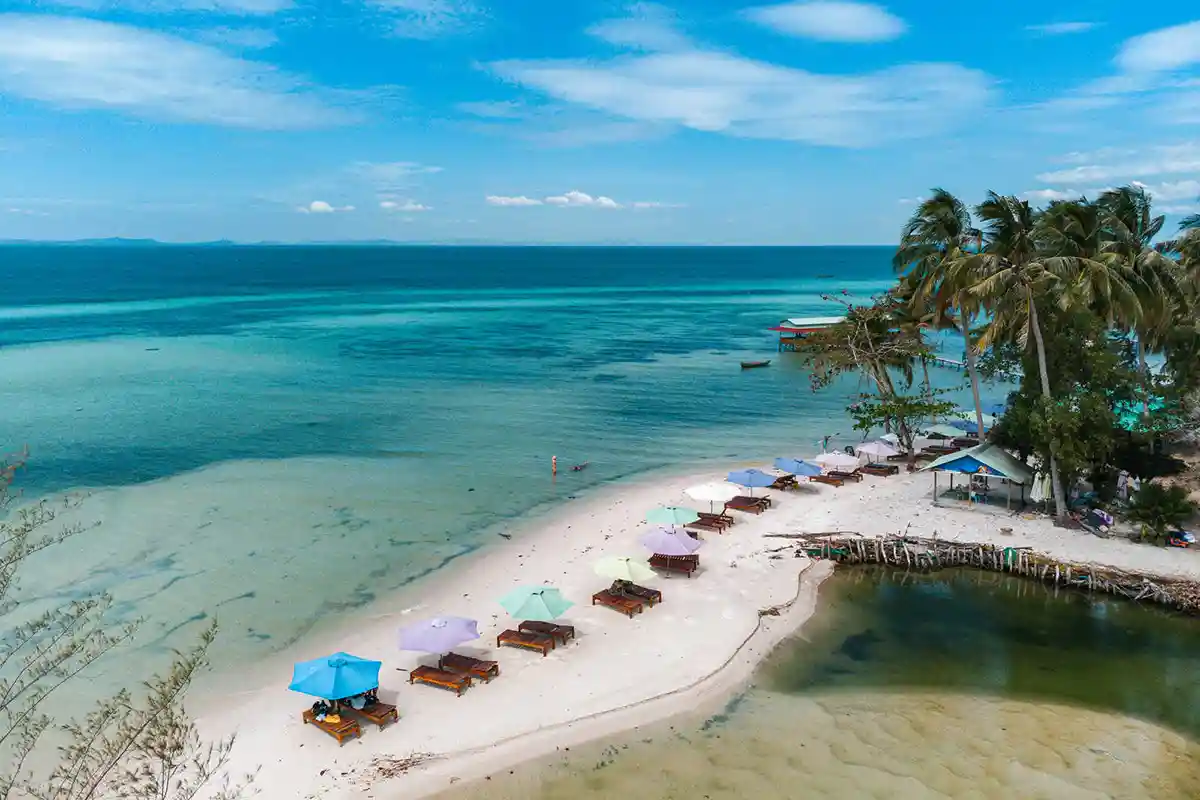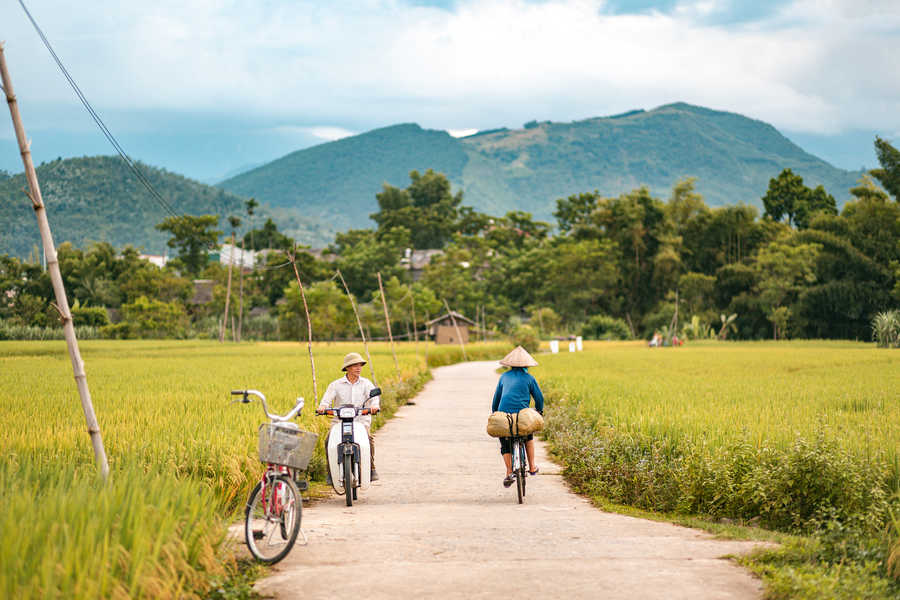———————————————————————————
Mu Cang Chai is a small mountainous region located in Yen Bai province, in northwest Vietnam. Nestled at an average altitude of 1,000 meters above sea level, this area is famous for its spectacular terraced rice fields, considered some of the most beautiful and picturesque in the country. These rice terraces, carved into the mountainsides, stretch as far as the eye can see and offer breathtaking views that change with the seasons, from vibrant green during the growing period (July-August) to golden hues as harvest time approaches (September-October).
Mu Cang Chai is also rich in culture and history. The region is predominantly inhabited by ethnic groups such as the Hmong and Thai, who maintain unique ancestral traditions. These communities live in harmony with nature and preserve a traditional way of life, providing visitors with a rare opportunity to discover their crafts, customs, and warm hospitality.
In this article, you will find all the essential information to prepare your visit: how to get there, what to see and when, and where to stay.
We also offer two discovery tours that you might enjoy.
Feel free to contact us to organize your tour in Northern Vietnam.
Why visiting Mu Cang Chai ?
Mu Cang Chai, though less known than Sapa, offers a unique and authentic experience that deserves to be discovered by any traveler seeking natural beauty and local culture.
Here are a few reasons why visiting Mu Cang Chai is a fantastic idea !
Unmatched scenic beauty
The terraced rice fields of Mu Cang Chai are among the most beautiful in Vietnam. These terraces, carved into the mountainsides by successive generations of Hmong farmers, create a breathtaking landscape, especially stunning during planting and harvest seasons. Unlike Sapa, where mass tourism has somewhat altered the landscape and atmosphere, Mu Cang Chai remains a hidden gem, preserved from excessive tourist development.
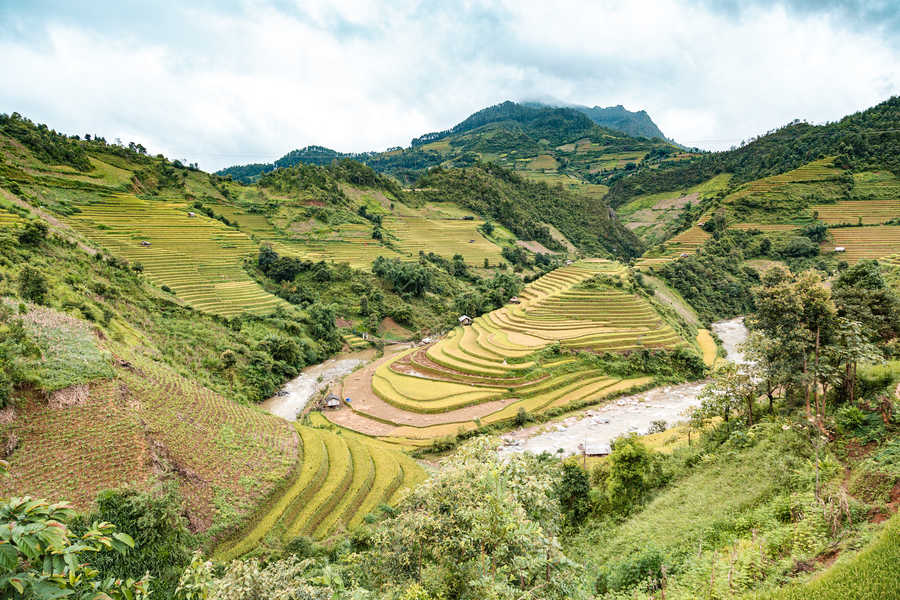
Pady fields of Mu Cang Chai. Photo credit : Mathieu Arnaudet
Cultural authenticity
In Mu Cang Chai, visitors can immerse themselves in the daily life of local ethnic groups, primarily the Hmong and Thai. This region offers a unique opportunity to discover traditional lifestyles and customs. Local markets, cultural festivals, and interactions with the residents provide a deep dive into local culture, far more authentic than in more touristy areas like Sapa.
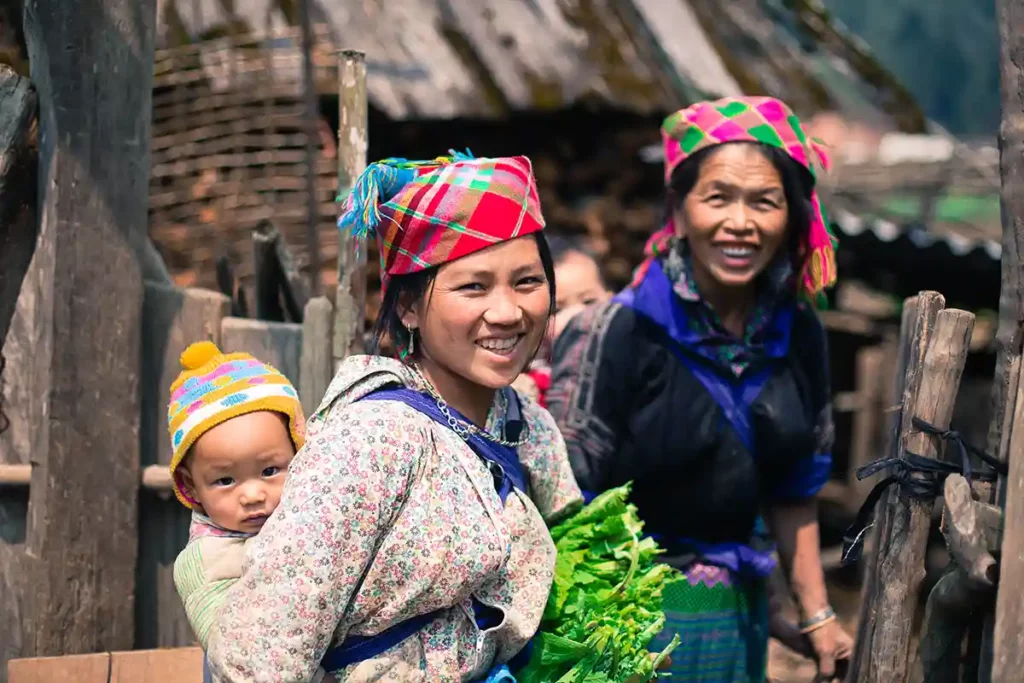
Hmong women in Mu Cang Chai, Yen Bai. Photo credit : Mathieu Arnaudet
Off-the-beaten-path-experience
Visiting Mu Cang Chai means venturing into a region largely unknown to traditional tourist circuits. This sense of exploration and discovery is heightened by the absence of large tourist infrastructures. Hikers and nature enthusiasts can enjoy less-traveled trails, offering exceptional panoramic views without the crowds typically found in Sapa.
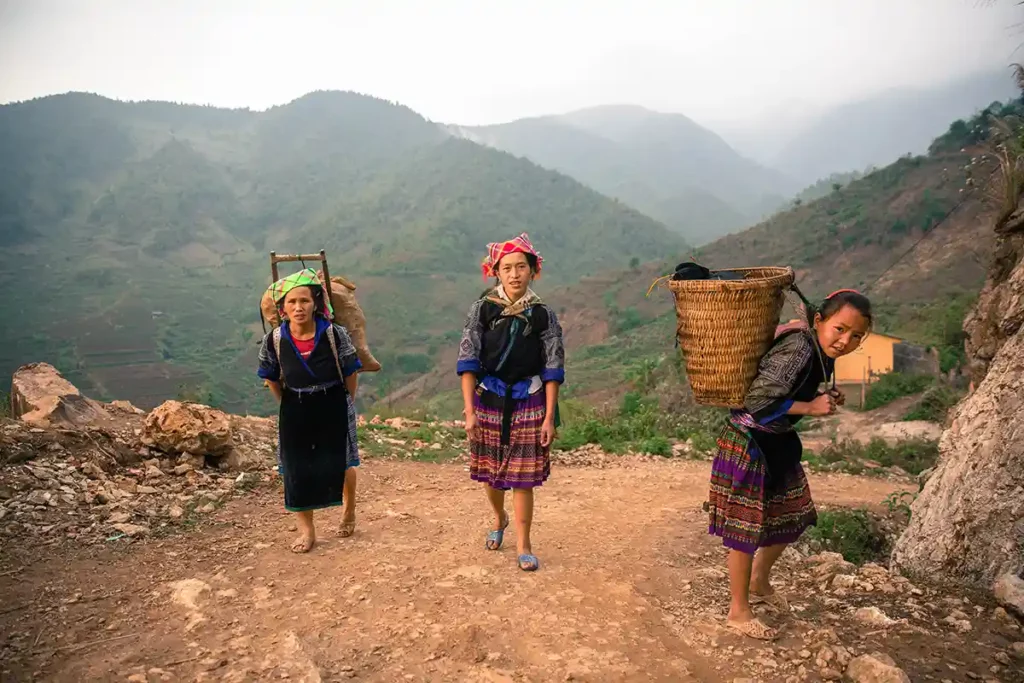
Hmong woman coming back from the rice fields in Mu Cang Chai. Photo : Mathieu Arnaudet
Peace and serenity
The tranquility of Mu Cang Chai is one of its greatest attractions. Far from the hustle and bustle of popular tourist destinations, this region offers a peaceful setting where visitors can rejuvenate in nature. The sounds of rivers, birdsong, and the wind rustling through the rice fields create a relaxing ambiance, perfect for those looking to escape the stress of urban life.
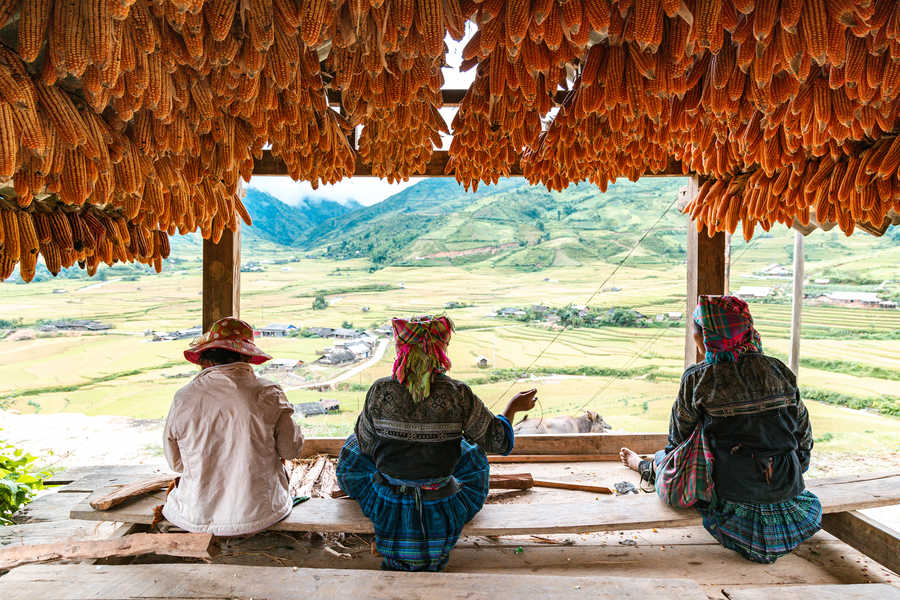
Work with a view, Mu Cang Chai. Photo : Mathieu Arnaudet
Landscape photography
For photography enthusiasts, Mu Cang Chai is a paradise. The terraced rice fields offer spectacular photographic opportunities, especially at dawn and dusk. The play of light on the terraces, the changing colors of the crops, and the presence of field workers create breathtaking scenes, with far fewer tourists compared to Sapa.

Landscape of Mu Cang Chai, Photo : Mathieu Arnaudet
What to do in Mu Cang Chai ?
Mu Cang Chai offre une multitude d’activités qui permettent de découvrir ses paysages époustouflants et de s’immerger dans la culture locale. Voici quelques-unes des meilleures choses à faire dans cette région unique.
Trekking
Mu Cang Chai is a paradise for hikers. The hiking trails wind through terraced rice fields, forests, and mountains, offering breathtaking panoramic views. Hikes can range from a few hours to several days, depending on the chosen routes. One of the most popular hikes is the Khau Pha Pass trek, which offers stunning views of the valleys below and the terraced rice fields. This hike typically starts from the village of La Pan Tan, a popular starting point for trekkers. The trail winds through varied landscapes, passing terraced rice fields, pine forests, and local villages. The ascent to the pass is moderate to challenging, with steep sections that require good physical condition. However, the beauty of the scenery makes the effort well worth it.
Motorbike tour with Hmong people
For an even more thrilling adventure, guided motorcycle tours led by Hmong guides are a must-try experience. These local guides know their territory intimately and take travelers off the beaten path, through winding roads and less-traveled trails. This way of exploring Mu Cang Chai allows you not only to reach remote areas but also to gain a deeper understanding of the daily lives of the inhabitants. Along the way, you can visit isolated villages, meet local artisans, and admire landscapes that few tourists get to see. You’ll also have the opportunity to explore a broader area of the region.
Visiting the bamboo forest
The bamboo forest of Mu Cang Chai is another natural treasure to explore. Located near the terraced rice fields, this forest offers a serene and calming atmosphere. The trails through the giant bamboo are perfect for peaceful walks, far from the hustle and bustle. It is also an excellent spot for photography, with light filtering through the tall bamboo stalks creating enchanting plays of shadow and light. To get there, you have several options: 1) Go by motorbike from the town of Mu Cang Chai; 2) Book a day tour by motorbike that will take you to the forest; 3) Hike there from the town.
Discovering the local handicraft
Traditional craftsmanship is an integral part of the culture in Mu Cang Chai. The locals, especially Hmong women, are renowned for their weaving and embroidery skills. By visiting the local villages, travelers can observe these artisans at work, learn about ancient techniques, and even purchase handmade souvenirs. The local markets are filled with colorful textiles, handcrafted jewelry, and many other unique items that reflect the rich cultural heritage of the region.
Participating in agricultural activities
Engaging in agricultural activities is a unique way to experience the culture of Mu Cang Chai. Visitors can join local farmers in their daily routines, such as planting or harvesting rice in the terraced fields. This hands-on experience offers a deep insight into the hard work and traditional methods used by the farmers. It’s an enriching opportunity to connect with the locals and understand their way of life, all while enjoying the stunning natural surroundings.
Best time for visiting Mu Cang Chai
Mu Cang Chai is a destination that can be visited year-round, but certain times are especially ideal for fully enjoying its spectacular landscapes and activities. Here is a detailed guide to the best times to visit this region, with a focus on the stages of rice cultivation.
Climate
Mu Cang Chai enjoys a mountainous climate with four distinct seasons:
- Spring (March to May): Pleasant temperatures and blooming trees. It’s a great time for hiking and exploring the villages.
- Summer (June to August): Rainy season, with frequent but short showers. The landscapes are lush and green.
- Autumn (September to November): The best time to visit Mu Cang Chai. The terraced rice fields turn golden as the rice ripens, offering breathtaking views.
- Winter (December to February): Cold climate with low temperatures. Less greenery, but a peaceful atmosphere and fewer tourists.
Rice season: the stages of rice cultivation
The terraced rice fields of Mu Cang Chai follow a precise agricultural cycle that greatly influences the landscape. Here are the main stages of rice cultivation:
- Field Preparation (May): Farmers begin by plowing the fields. During this period, the terraces are flooded, creating impressive water reflections. The landscape is dominated by water and mud, offering unique photogenic scenes.
- Transplanting (June to early July): Young rice seedlings are planted in the flooded terraces. The fields turn a vibrant green, and the farmers, often in traditional attire, create lively and dynamic scenes. This is an excellent time to visit, as you can see the farmers at work and even participate in some activities.
- Growing (July to August): The rice plants start to grow, and the terraces fill with verdant young plants. Although it’s the rainy season, the landscapes are stunning, with intense green contrasts and cloudy skies.
- Harvesting (September to October): Harvest time is the most anticipated period. The terraces turn golden as the rice ripens. Farmers cut the rice, often by hand, and transport it for drying. Harvest scenes, with families working together in the golden fields, are iconic of Mu Cang Chai.
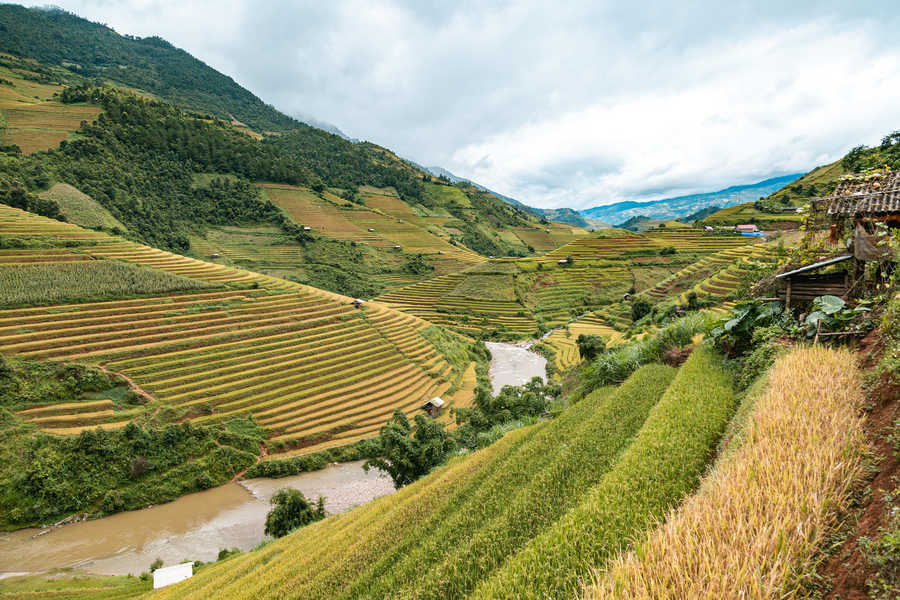
Rice fields of Mu Cang Chai before the harvest. Photo : Mathieu Arnaudet
Local events
Terraced Rice Fields Festival (late September): This event celebrates the beauty of the terraced rice fields and the local culture. It includes traditional performances, photo contests, and craft exhibitions.
Ethnic Markets: Throughout the year, but especially active during the harvest season, local markets offer an opportunity to discover the region’s crafts, cuisine, and fresh products. Among the most notable, the Mu Cang Chai market, held every Sunday, is a must-visit. Located in the center of Mu Cang Chai, it is easily accessible on foot from most local accommodations.
The stalls are brimming with fresh vegetables, fruits, spices, and other locally grown agricultural products. You will also find colorful textiles, hand-embroidered clothing, jewelry, and other handicrafts. These products are often made using ancestral techniques passed down through generations. The food stands offer a variety of local dishes, such as xôi (sticky rice), bánh cuốn (rice crepes), and other regional specialties. It’s an excellent opportunity to taste the local cuisine and savor dishes prepared on the spot.
Our tips for travelers
Photographers: The best times to capture the terraced rice fields are in May-June for the young green plants and in September-October for the golden fields.
Hikers: Plan your hikes according to the climatic seasons and agricultural activities for a rich and varied experience.
Cultural Immersion: Participating in agricultural activities during transplanting and harvesting seasons can provide an authentic immersion into local life.
How to go to Mu Cang Chai ?
Getting to Mu Cang Chai can be an adventure in itself, given its remote location in the northwest mountains of Vietnam. However, several transportation options are available, ranging from buses to private cars to motorbikes, each offering a unique travel experience.
By bus from Hanoi
One of the most common and economical ways to get to Mu Cang Chai is by taking a bus from Hanoi. Here are the details for this option:
Departure: Buses to Mu Cang Chai depart from My Dinh Bus Station in Hanoi.
Bus Route: You can take a direct bus to Mu Cang Chai or a bus that makes a stop in Nghia Lo.
Travel Time: The bus ride from Hanoi to Mu Cang Chai takes about 7 to 8 hours, depending on traffic conditions and stops along the way.
Schedule: Buses typically leave early in the morning or in the early evening. It is advisable to check the schedule in advance and book your tickets.
Cost: The ticket price is 250,000 VND (approximately 10 euros).
Practical tip: It is recommended to call the bus company in advance (ask your hotel or travel agency to do this) to reserve seats. You will then pay during the journey.
By private car
For those who prefer more comfort and flexibility, renting a private car is an excellent option:
Route: The drive from Hanoi to Mu Cang Chai goes through Nghia Lo, offering panoramic views of mountains and valleys.
Travel Time: About 6 to 7 hours, depending on speed and stops along the way.
Advantages: You can stop at your leisure to admire the scenery, take photos, or visit villages along the route.
Cost: Renting a private car with a driver can cost between 2,000,000 VND and 3,000,000 VND (approximately 85 to 130 USD) per day, depending on the type of vehicle and the rental company.
Practical Tip: For car rentals, travel agencies are the most competent.
By motorbike
For adventurers, traveling by motorbike is an exciting and immersive option. Note that you must have an international motorcycle license to ride in Vietnam.
Motorbike Rental: You can rent a motorbike in Hanoi or Nghia Lo. Many rental agencies offer well-maintained bikes equipped for long journeys.
Route: The ride from Hanoi to Mu Cang Chai is spectacular, featuring mountains, rice fields, and forests. This journey allows you to explore rural areas and villages that you wouldn’t see by bus or car.
Travel Time: About 8 to 9 hours, depending on your speed and frequent stops to admire the scenery and rest. We recommend stopping for a night in Nghia Lo.
Safety: Ensure you have good motorbike riding experience, wear a safety helmet, and follow Vietnamese traffic rules.
Practical Tip: It is advisable to plan your route in advance, check weather conditions, and carry a map or GPS.
Recommended route via Nghia Lo
A popular and scenic route to Mu Cang Chai passes through Nghia Lo, a charming small town that offers a pleasant break along the way. Here is an overview of this route:
Hanoi to Nghia Lo: The bus or car journey from Hanoi to Nghia Lo takes about 4 to 5 hours. You can spend a night in Nghia Lo to rest and explore the area.
Nghia Lo to Mu Cang Chai: The journey from Nghia Lo to Mu Cang Chai takes about 2 to 3 hours. This part of the route is particularly beautiful, with terraced rice fields and mountains as a backdrop.
Where to stay overnight in Mu Cang Chai ?
Mu Cang Chai offers a variety of accommodation options to suit all tastes and budgets, ranging from the authenticity of a homestay to the convenience of a guesthouse, and even the luxury of a resort. Here is an overview of the three main types of lodging available in this picturesque region.
Homestay
Choosing a homestay is an excellent way to immerse yourself in the local culture and have an authentic experience.
Local guesthouses are often run by Hmong or Thai families who open their homes to travelers. These accommodations are generally simple but comfortable, offering a true immersion into rural life.
Example of Accommodation: Sanh Nhon – The Homestay (Budget-Friendly)
This is a Thai family that has converted their home into a homestay. Recently, they have added private rooms in addition to their communal sleeping area. The accommodation is in the Mu Cang Chai commune, slightly outside the town, just before a valley with rice fields. The access to the most famous rice terraces of Mu Cang Chai is very close (a few minutes by motorbike). However, we must mention a few drawbacks: there is no view from the homestay. When visiting Mu Cang Chai, you might want a beautiful view from your room, but that is not the case here. There is a valley with rice fields nearby, but it is flat. The common areas are lacking in cleanliness.
Expect to pay around 10 euros per person for a mattress in the communal area and 20-25 euros for a private room.
You can follow this link to see pictures of the homestay
Guesthouses
For those seeking a level of comfort between the authenticity of a homestay and the luxury of a resort, guesthouses like Dong Suoi H’mong Homestay & Bungalow are an excellent option.
Located in the heart of nature, Dong Suoi H’mong Homestay & Bungalow offers charming accommodations with stunning views of the terraced rice fields. The bungalows are built in harmony with the local environment, using traditional materials but equipped with modern amenities.
Advantages: This type of accommodation offers a good balance between comfort and authenticity. Visitors can enjoy private rooms with bathrooms while having the opportunity to participate in local activities and savor traditional meals. Bertrand is French, which allows travelers to easily discuss life on-site with him. The lodging also offers a superb view of the rice terraces (you can have breakfast on the terrace while admiring the landscape).
Activities Offered: The guesthouse offers various activities such as hiking and motorbike tours with Hmong guides, allowing visitors to discover the cultural and natural riches of the region.
The cost is approximately 20-25 euros per night in this guesthouse.
You can follow this link to see more pictures.
Resorts
For a more luxurious experience, resorts like Le Champ (Tu Le Valley) and the upcoming Mu Cang Chai Resort (scheduled to open in August 2024) offer high-end accommodations with superior services.
The resorts feature spacious and elegant rooms, often with balconies offering panoramic views of the rice terraces and mountains. They provide modern facilities such as swimming pools, spas, gourmet restaurants, and concierge services.
Advantages: Staying at a resort allows you to enjoy all modern comforts while being surrounded by the natural beauty of Mu Cang Chai. Visitors can relax and rejuvenate in a luxurious setting, with access to organized activities and excursions.
Examples:
Le Champ: This resort is known for its idyllic setting and high-quality services, including spas and restaurants offering refined local cuisine.
Mu Cang Chai Resort: Scheduled to open in August 2024, this new resort promises to offer a luxurious experience with modern facilities and spectacular views of the terraced rice fields.
Expect to pay over 100 euros per night in these establishments.
Our tours for discovering Mu Cang Chai
For those who wish to explore Mu Cang Chai in an organized manner, here are three tour itineraries, each offering an immersive and varied discovery of the region. These itineraries are designed for stays of less than a week, allowing travelers to make the most of the spectacular landscapes and local culture.
Tour 1 : Nghia Lo and Mu Cang Chai (3-4 days)
Day 1 : Arrival in Nghia Lo
Morning: Depart from Hanoi by bus or private car to Nghia Lo (approximately 4-5 hours of travel).
Afternoon: Check into the hotel or homestay. Visit the town of Nghia Lo, explore the local markets, and get your first immersion in the local culture.
Evening: Traditional dinner and overnight stay in Nghia Lo.
Day 2 : Nghia Lo to Mu Cang Chai
Morning: Early departure for Mu Cang Chai. En route, stop at Tu Le and Khau Pha Pass to admire the landscapes and take photos.
Afternoon: Arrive in Mu Cang Chai. Check into your accommodation (homestay, guesthouse, or resort). Visit the terraced rice fields and meet local farmers.
Evening: Dinner at a homestay or a local restaurant and overnight stay in Mu Cang Chai.
Day 3 : Exploration of Mu Cang Chai
Morning: Hike to Khau Pha Pass, with stops to admire the panoramic views and visit local villages.
Afternoon: Motorbike ride with a Hmong guide to discover off-the-beaten-path locations. Visit the bamboo forest and local artisans.
Evening: Return to your accommodation, dinner, and overnight stay in Mu Cang Chai.
Day 4 : Mu Cang Chai to Hanoi
Morning: Free morning to further explore Mu Cang Chai or shop for souvenirs at the local market.
Afternoon: Return to Nghia Lo and then continue to Hanoi by bus or private car.
Discover more about our tour.
Tour 2 : Nghia Lo, Mu Cang Chai and Sapa (5-6 days)
Day 1 : Arrival in Nghia Lo
Morning: Departure from Hanoi to Nghia Lo. Check into accommodation.
Afternoon: Discover Nghia Lo, visit the markets, and enjoy your first cultural immersion.
Evening: Dinner and overnight stay in Nghia Lo.
Day 2 : Nghia Lo to Mu Cang Chai
Morning: Departure for Mu Cang Chai with stops at Tu Le and Khau Pha Pass.
Afternoon: Arrive in Mu Cang Chai, check into accommodation, and visit the terraced rice fields.
Evening: Dinner and overnight stay in Mu Cang Chai.
Day 3 : Exploration of Mu Cang Chai
Morning: Hike and explore the local landscapes and villages.
Afternoon: Motorbike ride with a Hmong guide, visit the bamboo forest and local artisans.
Evening: Dinner and overnight stay in Mu Cang Chai.
Day 4 : Mu Cang Chai to Sapa
Morning: Departure for Sapa, passing through mountainous landscapes.
Afternoon: Arrive in Sapa, check into accommodation, and explore the town.
Evening: Dinner and overnight stay in Sapa.
Day 5 : Visite of Sapa
Morning: Hike to the ethnic villages around Sapa (Cat Cat, Ta Phin).
Afternoon: Visit the Sapa market and discover local products.
Evening: Dinner and overnight stay in Sapa.
Day 6 : Return to Hanoï
Morning: Free time to further explore Sapa.
Afternoon: Return to Hanoi by bus or private car.
Discover more about our tour
Tour 3 : Mu Cang Chai and around (4-5 days)
Day 1 : Arrival in Mu Cang Chai
Morning: Departure from Hanoi by bus or private car to Mu Cang Chai.
Afternoon: Check into accommodation. First visit to the terraced rice fields and the local village.
Evening: Dinner and overnight stay in Mu Cang Chai.
Day 2 : Hiking and local exploration
Morning: Hike to Khau Pha Pass, visit Hmong villages along the way.
Afternoon: Return to Mu Cang Chai, visit the bamboo forest and local artisans.
Evening: Dinner and overnight stay in Mu Cang Chai.
Day 3 : Motorbike ride
Morning: Motorbike ride with a Hmong guide to discover off-the-beaten-path locations.
Afternoon: Participate in agricultural activities with locals, discover local crafts.
Evening: Dinner and overnight stay in Mu Cang Chai.
Day 4 : Exploring the surroundings and return
Morning: Excursion to nearby waterfalls and landscapes.
Afternoon: Return to Mu Cang Chai and departure for Hanoi or Nghia Lo.
Evening: Overnight stay in Nghia Lo or return to Hanoi.
Day 5 (optional) Nghia Lo to Hanoï
Morning: Free time in Nghia Lo, visit local markets.
Afternoon: Return to Hanoi.
These tours offer a balance of adventure, cultural discovery, and immersion in nature, allowing travelers to have unforgettable experiences in the beautiful region of Mu Cang Chai.
Now you know everything about the splendid region of Mu Cang Chai! Feel free to contact us to organize your stay there and in Northern Vietnam.

